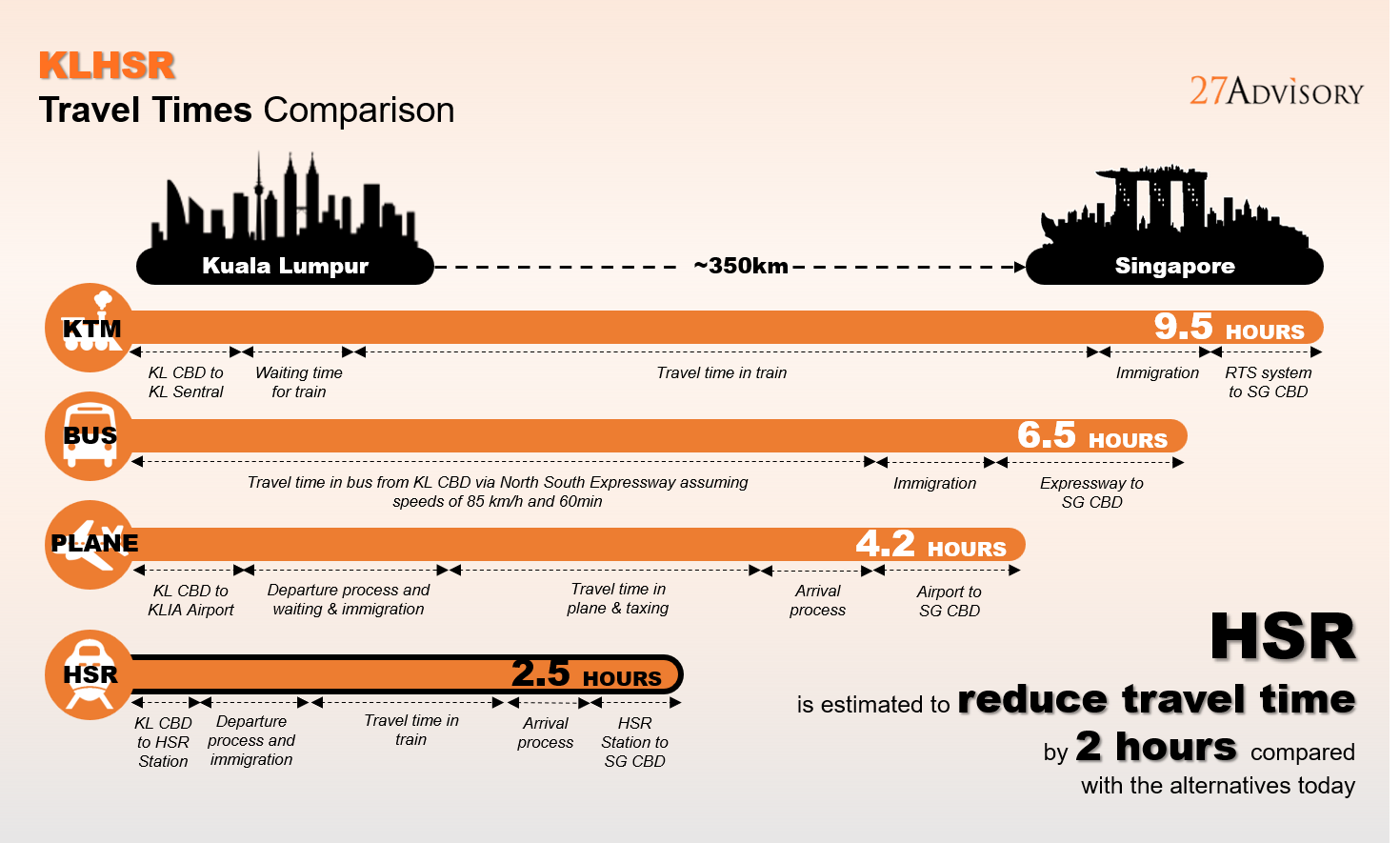
With the renewed interest surrounding the development of the KLHSR Project, it is necessary to consider the opportunities and challenges involved in its development. The KLSHSR Project has the potential to bring a wide range of benefits to the economies of both Malaysia and Singapore. The HSR has been projected to contribute an amount within the region of RM21 billion to the Gross Domestic Product of both Malaysia and Singapore and to create 111,000 jobs by 2060.
Singapore and Malaysia were the second largest trade partners in 2022, with bilateral flows between the two countries amounting to $85.53 billion in 2023. Singapore was also one of Malaysia’s top sources of foreign direct investment, contributing to 8.3% of its total investments for that year. In light of the significant level of trade between both nations, introducing a rapid and seamless means of transport would support further opportunities for mutual trade and economic development between both regions.

The benefits of the KLHSR Project extend towards a range of areas. The greater accessibility afforded by the system would lead to improvements in human capital, consumption patterns and economic activity in a continuous virtuous cycle of growth. Both nations would experience significant levels of population growth with the increased level of mobility and improvements in labour skills due to the mutual sharing of knowledge and resources. A corresponding increase in per capita wages would likely follow and lead to increased consumption patterns. These factors contribute to improvements in industrial productivity, particularly within the manufacturing, services and tourism sectors, due to access to better labour resources and to meet increasing demand for goods and services.
Furthermore, the KLHSR has the potential to promote inclusive state development and close the growing income gap between the southern states in Malaysia. It could also catalyse growth along the HSR corridor, unlocking up to RM19 trillion in wider economic impacts. The project also has the potential to improve talent pool accessibility by attracting talent from across the country into the HSR corridor, contributing to higher-income jobs, and enhancing the standard of living overall.
By facilitating job creation and enabling greater opportunities for business activity, the KLHSR project would help to transition Malaysia towards becoming a high-income nation. It would also help to bring isolated regions within the country closer together, support growth and development, and help towns to increase their hidden potential by making them highly accessible to workers, investors and tourists.
Related articles:
Article 1: The Original Concept for the KLHSR
Article 2: The Original Project Delivery Structure for the KLHSR
Article 4: Potential Challenges/Risks Associated with the KLHSR Project














